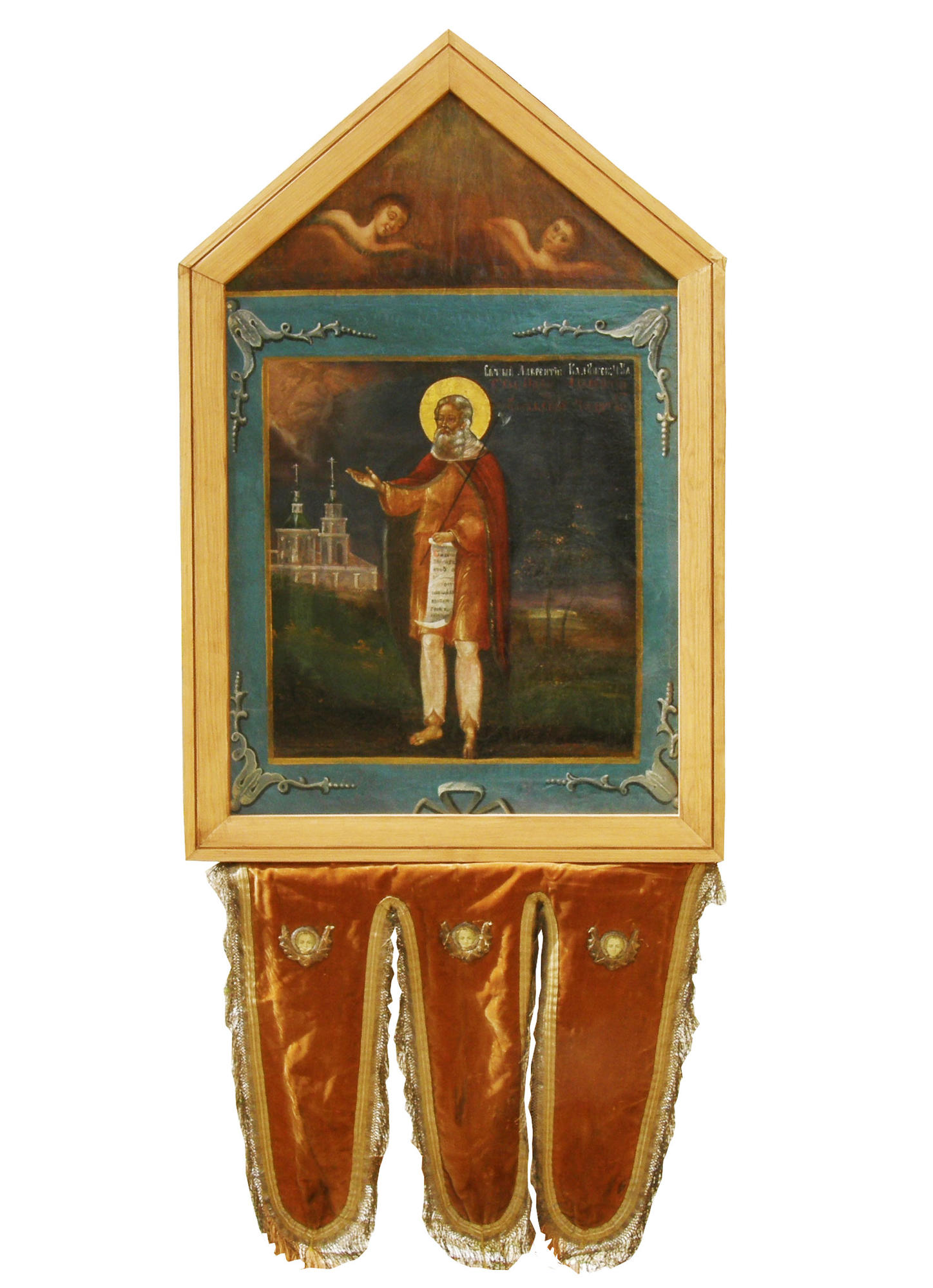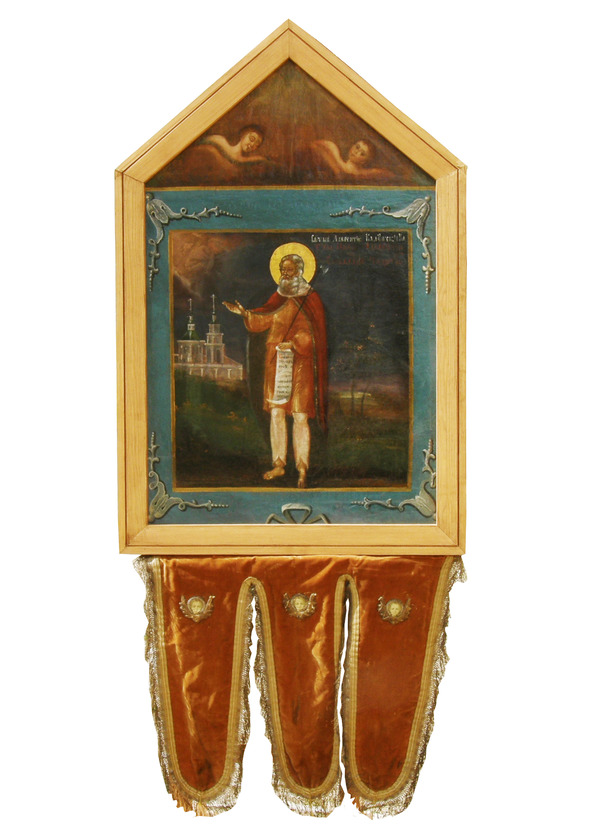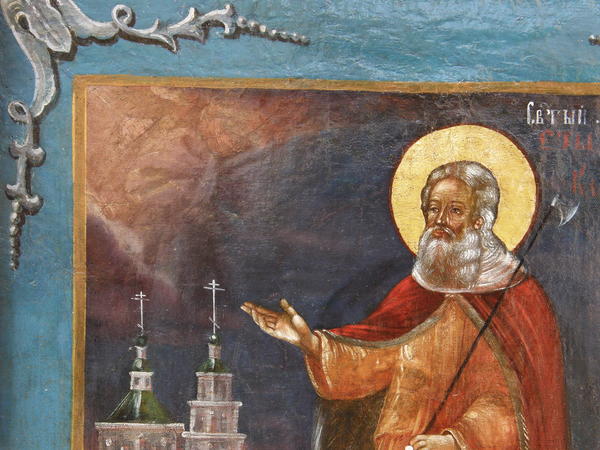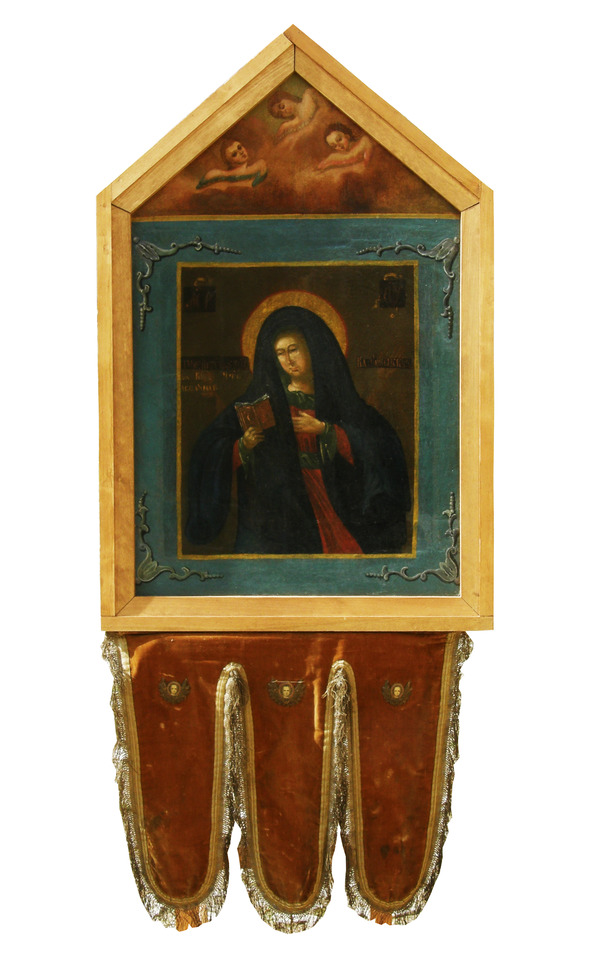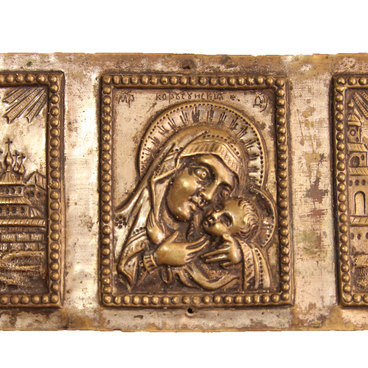A khorugv – an Orthodox church banner or worship flag – first came into being in Byzantium in the 4th century – during the reign of Constantine the Great. They depicted a cross and the Christogram. Khorugvs were used both during military campaigns and in peaceful times – for example, during Crucessions.
Russians used the word ‘flag’ more often than not: it meant a banner under which cohorts were assembled. A ducal militia may have had several flags, and military campaigners or warriors gathered around their flag once they heard the signal. Such symbols were traditionally protected by the most powerful sentinels and really strong warriors.
Khorugvs are first mentioned in Russia in The Tale of Igor’s Campaign written late in the 17th century:
“Червленый стяг, (“A dark red flag,
белая хоругвь, White khorugv,
червленый бунчук, Dark red foretop,
серебряное древко – A silver flagpole –
храброму Святославичу!” To brave Svyatoslavich! ’)
At war times, a cohort’s khorugv was put on the wall of a conquered town to signalize the final victory over the enemy. Khorugvs were kept in churches: their place was traditionally near the right and left choir stalls occupied by lectors and cantors during a religious service.
The museum exhibition shows a khorugv of the 1812 Kaluga militia. During the Patriotic War of 1812, Emperor Alexander I called on Russian people in his manifesto to form volunteers’ militia squads – and his call resonated with Kaluga’s citizens. The Kaluga militia was headed by Kiev governor Miloradovich. From August of 1812, volunteers stood sentry within the limits of Kaluga, guarded artillery storages, convoyed prisoners of war, and accompanied fodder and food supplies.
In many provincial militias, wartime banners were replaced with khorugvs – people went to defend their country in God’s name. In September of 1812, Bishop Kaluzhsky and Borovsky Yevlampy held a service and handed over a khorugv to the head of the militia, Vasily Shepelev. On its sides, it depicted the icon of the Most Holy Mother of God of Kaluga and the icon of the Holy Righteous Lawrence. With this khorugv, the Kaluga militia fought in the Smolensk and Mogilev provinces and took part in military campaigns abroad in 1813.
Russians used the word ‘flag’ more often than not: it meant a banner under which cohorts were assembled. A ducal militia may have had several flags, and military campaigners or warriors gathered around their flag once they heard the signal. Such symbols were traditionally protected by the most powerful sentinels and really strong warriors.
Khorugvs are first mentioned in Russia in The Tale of Igor’s Campaign written late in the 17th century:
“Червленый стяг, (“A dark red flag,
белая хоругвь, White khorugv,
червленый бунчук, Dark red foretop,
серебряное древко – A silver flagpole –
храброму Святославичу!” To brave Svyatoslavich! ’)
(Translation from Old Church Slavonic into Russian was done by Dmitry S. Likhachev)
At war times, a cohort’s khorugv was put on the wall of a conquered town to signalize the final victory over the enemy. Khorugvs were kept in churches: their place was traditionally near the right and left choir stalls occupied by lectors and cantors during a religious service.
The museum exhibition shows a khorugv of the 1812 Kaluga militia. During the Patriotic War of 1812, Emperor Alexander I called on Russian people in his manifesto to form volunteers’ militia squads – and his call resonated with Kaluga’s citizens. The Kaluga militia was headed by Kiev governor Miloradovich. From August of 1812, volunteers stood sentry within the limits of Kaluga, guarded artillery storages, convoyed prisoners of war, and accompanied fodder and food supplies.
In many provincial militias, wartime banners were replaced with khorugvs – people went to defend their country in God’s name. In September of 1812, Bishop Kaluzhsky and Borovsky Yevlampy held a service and handed over a khorugv to the head of the militia, Vasily Shepelev. On its sides, it depicted the icon of the Most Holy Mother of God of Kaluga and the icon of the Holy Righteous Lawrence. With this khorugv, the Kaluga militia fought in the Smolensk and Mogilev provinces and took part in military campaigns abroad in 1813.
